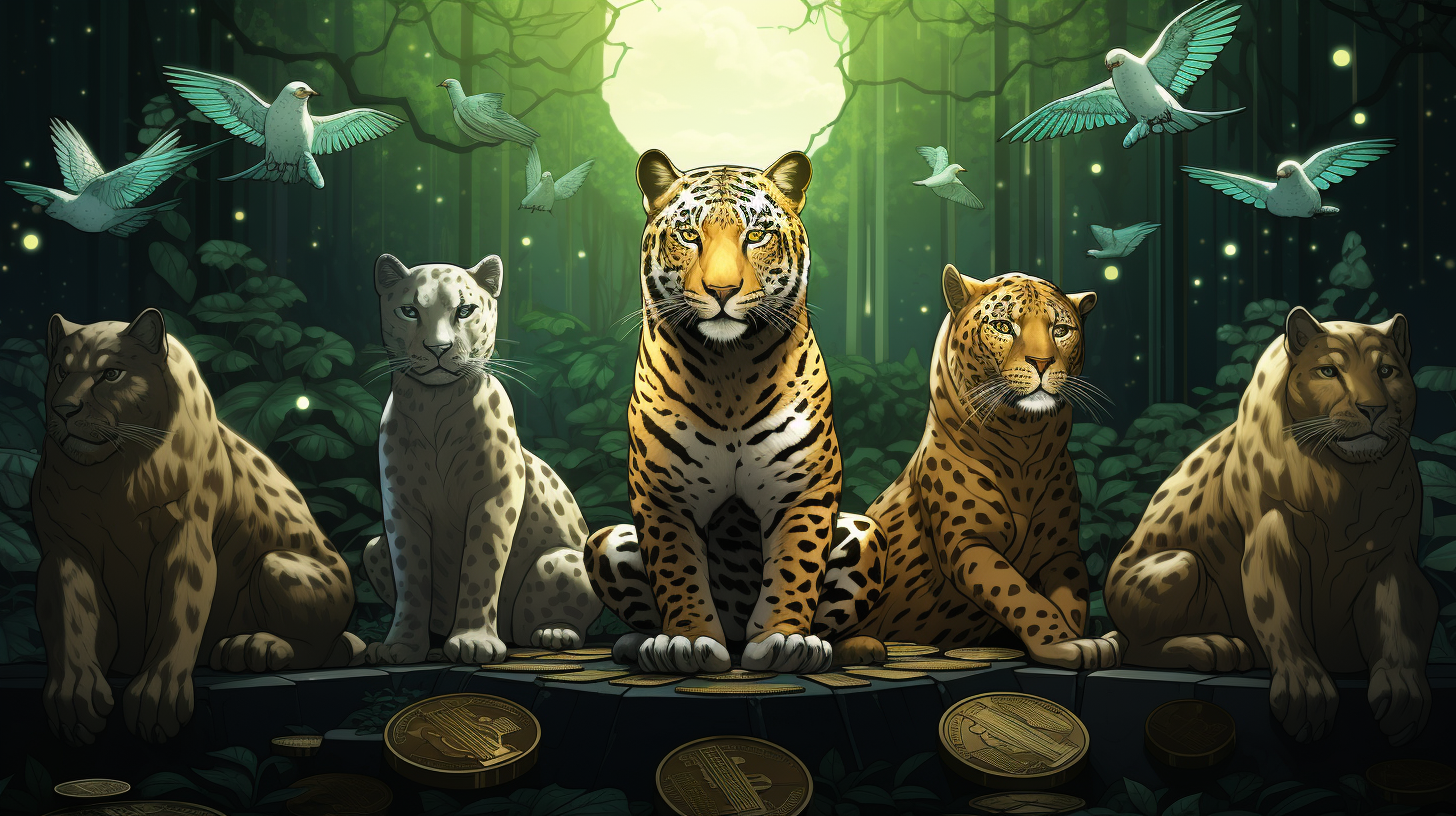In the verdant depths of the Amazon, where biodiversity is as rich as the ecosystem is dense, a new kind of conservation effort is unfurling its digital wings. It’s a world where the flutter of a butterfly’s wing in Brazil sets off not a storm but a blockchain reaction that reverberates through the internet, garnering support for the conservation of its species across the globe. Crypto Conservationists are taking up the charge to save our endangered species, equipped not with binoculars and jeeps but with blockchain and smart contracts.
In a narrative that could only belong to the 21st century, the conservation of wildlife is evolving from charity dinners and adopt-an-animal programs to something more enigmatic: cryptocurrency and blockchain technology. In this crypto-centric world where notions of currency and tradable assets have been redefined, the question arises: Can blockchain save our endangered species?
Conservation efforts have long faced a crucial challenge — transparency. When donors give money to save the majestic tigers of Sundarbans or the regal elephants of the Savannah, they often do so with hope rather than certainty that their funds will indeed reach the intended cause. Blockchain’s first gift to conservation is its ability to create a transparent trail for donations, ensuring accountability and fostering trust amongst benefactors.
Following the trail blazed by ‘Crypto Zoology,’ which showcased species-specific cryptocurrencies and blockchain-secured databases, we are seeing an innovative application of these technologies in individual conservation projects. Take, for instance, the Orangutan Outreach, which has recently launched ‘Red Ape Coin’. Transactions with this coin directly fund the rehabilitation of rescued orangutans. Each coin contains transaction metadata that reflects the real-world impact, such as supplies purchased for the rehabilitation centers or acres of rainforest preserved.
Moreover, the immutable nature of blockchain is a boon for the documentation of wildlife data. True to its ethos of unalterability, blockchain ensures that once a piece of data is logged, it becomes an eternal testament to the status of a species at a given point in time. Instead of relying on scattered and sometimes unreliable data points, conservationists can access a decentralized, incorruptible ledger that paints a clearer picture of wildlife population dynamics and habitat usage.
The allure and profitability of Non-Fungible Tokens (NFTs) have also been harnessed for conservation causes. Artists and photographers are minting NFTs of endangered species, creating a line of digital artwork whose proceeds directly benefit those species. Enthusiasts can now ‘own’ a piece of digital art while their investment goes towards tangible conservation efforts.
And let’s not forget the power of smart contracts. These self-executing contracts with the terms of the agreement between buyer and seller directly written into lines of code have found a place in ensuring that specific conservation actions are carried out. For example, funds can be held in escrow and only released upon the verified completion of a habitat restoration project.
However, it’s crucial to address the challenges. Energy consumption remains the elephant in the room — most blockchain operations, particularly those involving cryptocurrencies, consume considerable amounts of energy. And ironically, increased energy consumption comes with an environmental cost, threatening the very habitats we aim to save. Viable solutions include the use of blockchain platforms that require less energy, such as those working on proof-of-stake instead of proof-of-work protocols.
The intersection of blockchain and biodiversity conservation is also breeding ground for innovation. With the rise of ‘crypto-cities,’ could we envisage urban developments designed with built-in crypto incentives for protecting urban biodiversity? Could blockchain-backed wildlife corridors that reward city dwellers for maintaining them change the face of urban planning?
The notions put forward in this conservation tapestry are bold, speculative, but increasingly feasible. From tracking charitable contributions with unfaltering precision to harnessing the purchasing power of NFT collectors for funding biodiversity, the seeds of a revolution in conservation are being sown. We stand on the brink, where the digital realm could empower us to preserve the Earth’s living treasures. The crypto conservationists are here, and they invite us to imagine a world where endangered species thrive, sheltered under the resilient canopy of blockchain technology.
It is a chorus pitched at the frequency of innovation, one question echoing in its harmonies: Can blockchain save our endangered species? With every contribution, click, and crypto transaction, we are drawing closer to an answer.
